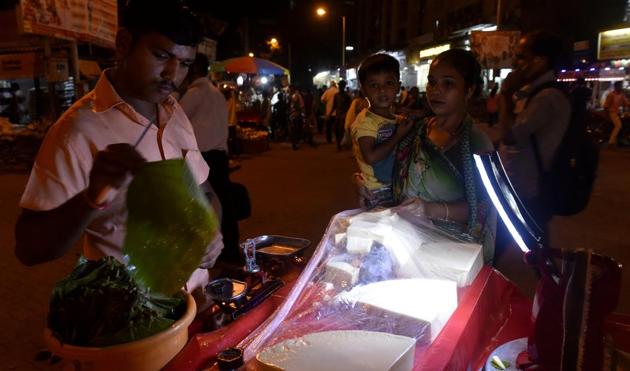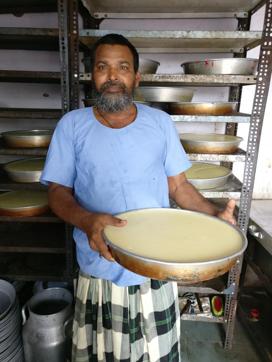Through the milky way
Who makes those large white slabs of kharvas and how? The answers lie in a tiny corner of Dharavi
It’s a bit of an oddity: part-custard, part-jelly, part-paneer, part-yoghurt. If you’ve seen carts with those white slabs of kharvas across Mumbai at dusk and ever tried some, you’ll know it tastes unlike any other milky sweet.

Maharashtrians are quick to tell you that kharvas is a delicacy, made from colostrum or the milk of a cow or buffalo in one or two days of her giving birth. It’s unpalatable by itself – thick and slightly yellowish. But it’s densely nutritious, much higher in protein than regular milk, to strengthen a calf’s immunity in its first few days. “We associate it with the celebration of the birth of a calf, wealth for a household,” says chef Shantanu Gupte, who grew up in Thane and now hosts a show on the Food Food channel. “My grandmother had a bull and a cow, and I have memories of her preparing kharvas when I was young.”
Maharashtrians also won’t tell you that they’re not the only ones who make it. The mix of colostrum, milk and jaggery or sugar, steamed so the proteins coagulate into a jiggling solid, is prepared in several states. Kannada speakers call it ginnu, in Telugu it’s called junnu and Tamilians refer to it as seem paal. In the Konkan the word for it is geen or posu, Gujaratis call it bari and in parts of north India it’s called cheek, balli or bowli. It’s consumed warm or chilled, with cardamom, saffron, nutmeg or sesame to add flavour.
RIGHT ON TRACK

Most of Mumbai’s carts source their stock from four brothers, who make it commercially in Dharavi, Kurla and Goregaon. At Abid Ali Sheikh’s tiny unit in Dharavi, just behind a wall that separates the railway line north of Mahim station, large shallow vats of the mix steam quietly in commercial heaters or fill two tall cooling racks. “We use sugar, cheek and water in our recipe,” says Sheikh, 55. Hawkers sell them in Girgaum, Worli, central Mumbai, Vile Parle and Borivli, with stock going as far away as Surat and 20-kilo orders going to Maharashtrian weddings.
SPLIT ON MILK
Gupte says kharvas is, by its nature, a cruel food. “You’re taking the milk meant for a newborn who needs the nutrition,” he says. It explains why most traditional recipes call for no more than one cup of the milk, and servings are typically small and savoured.
It also explains why the commercial version is looked down upon. “To make batches that large with actual colostrum is impossible,” Gupte says. “They probably use cornstarch or china grass as coagulants instead, which are cheap. There’s a textural difference in the quality of homemade and commercial kharvas.”
Online, food blogs are full of recipes that substitute other thickening agents – whole-cream milk, condensed milk, hung curd, Greek yoghurt, gelatin and even egg-whites.
The dish, interestingly, is made in Europe too. The rural English make a pudding called beestings. In Sweden, recipes for kalvdans (literally calf-dance, because it jiggles), have been recorded since the 1600s. In Iceland, they make a dessert called abrystir with lactating cows’ milk, while the Norwegians have a dessert called råmelkspudding.
“But across Mumbai, wherever you go, there’s one thing common to all kharvas carts,” says Sheikh. “A dog waiting for leftovers. People love feeding them.”




